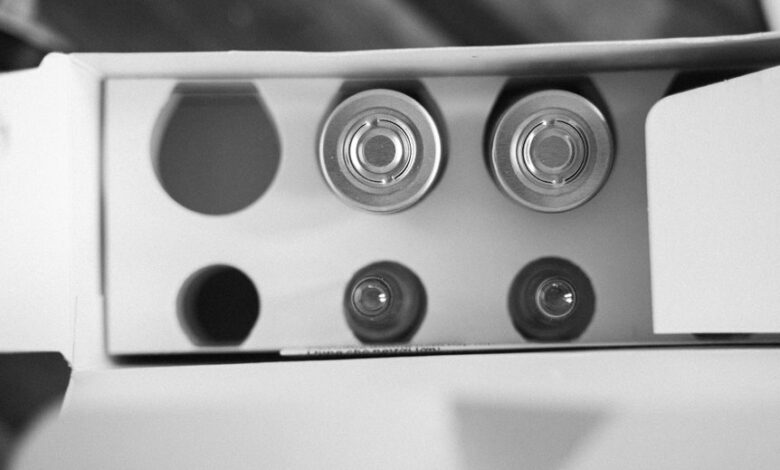Essentials of Product Innovation 3452744495

The essentials of product innovation are critical for sustaining competitive advantage in today’s market. Businesses must first grasp market needs, then strategically leverage research and development to create relevant solutions. Prototyping and testing play key roles in refining ideas before launch. Yet, the integration of technology and collaboration often proves to be the linchpins of successful innovation. Understanding these elements raises questions about what truly drives success in product launches and how they shape consumer loyalty.
Understanding Market Needs
How can companies effectively align their product innovations with the evolving demands of consumers?
By leveraging customer feedback and refining market segmentation, firms can identify specific needs and preferences. This strategic approach fosters creativity, enabling tailored solutions that resonate with diverse consumer segments.
Embracing this insight empowers businesses to innovate freely, ensuring relevance in a dynamic marketplace while enhancing customer satisfaction and loyalty.
The Role of Research and Development
Research and Development (R&D) serves as the backbone of product innovation by utilizing market analysis to identify emerging trends and consumer needs.
Through strategic prototyping and rigorous testing methods, R&D transforms theoretical ideas into viable products, ensuring alignment with market demands.
This iterative process not only fosters creativity but also mitigates risks, ultimately enhancing the competitiveness of the final offering.
Innovation Through Market Analysis
While many factors contribute to successful product innovation, a thorough market analysis stands out as a cornerstone of effective Research and Development (R&D).
By focusing on market segmentation and understanding consumer behavior, organizations can identify unmet needs and tailor their innovations accordingly.
This strategic approach empowers businesses to create products that resonate with diverse audiences, ultimately fostering greater market relevance and consumer satisfaction.
Prototyping and Testing Methods
Following a comprehensive market analysis, organizations must turn their attention to prototyping and testing methods as integral components of the product development process.
Employing user-centered design, rapid prototyping, and feedback loops, teams utilize physical models and virtual simulations during design sprints.
A/B testing and usability testing further enhance concept validation, ensuring stakeholder involvement and fostering innovative solutions that resonate with user needs.
Prototyping and Testing
Prototyping and testing serve as critical stages in the product innovation process, enabling teams to transform abstract concepts into tangible solutions.
By employing various testing methods, organizations can gather valuable feedback and identify potential flaws early in development.
This iterative design process fosters continuous improvement, ensuring that the final product aligns with user needs and market demands.
Importance of Prototyping
As product development increasingly demands agility and innovation, the significance of prototyping emerges as a critical factor in translating ideas into tangible solutions.
Prototyping benefits include enhanced collaboration, risk mitigation, and accelerated feedback loops. Various prototype types, such as low-fidelity and high-fidelity models, allow teams to explore concepts creatively, ensuring that innovations resonate with user needs while maintaining strategic alignment within the market landscape.
Testing Methods Overview
While the journey from concept to market-ready product can be fraught with challenges, employing a variety of testing methods ensures that innovations are both viable and user-centric. Effective testing hinges on analyzing user feedback and relevant test metrics, allowing teams to refine their designs strategically.
| Testing Method | Key Focus |
|---|---|
| Usability Testing | User interaction |
| A/B Testing | Preference analysis |
| Performance Testing | Functionality metrics |
Iterative Design Process
The iterative design process emerges as a fundamental strategy for refining product innovations through cycles of prototyping and testing.
By embracing user feedback, designers engage in multiple design iterations, allowing for the continuous enhancement of product functionality and user experience.
This dynamic approach fosters creativity and adaptability, empowering teams to pivot based on insights, ultimately leading to more effective and user-centered product solutions.
Leveraging Technology for Innovation
In an era where technological advancements redefine market landscapes, organizations that effectively leverage technology for innovation can gain a significant competitive edge.
AI integration, automation trends, and digital transformation drive software innovation, enabling enhanced data analytics.
Cloud computing and mobile technology facilitate IoT advancements, while robust cybersecurity solutions safeguard these emerging technologies, empowering businesses to adapt, thrive, and maintain agility in a rapidly evolving environment.
Collaborating for Success
Collaboration often emerges as a crucial ingredient for success in product innovation, as diverse perspectives and expertise can significantly enhance creativity and problem-solving.
Engaging cross-functional teams fosters innovation through:
- Enhanced stakeholder engagement
- Diverse skill sets that inspire creative solutions
- A culture of shared ownership and accountability
Together, these elements create a dynamic environment conducive to groundbreaking ideas and successful product development.
Strategies for Launching New Products
Successful product launches require a multifaceted approach that integrates market research, strategic positioning, and effective communication.
A comprehensive branding strategy, aligned with a precise launch timeline, facilitates successful market entry.
Employing competitive analysis enhances product positioning, while an optimized marketing mix ensures effective distribution channels.
Gathering customer feedback post-launch refines future strategies, fostering adaptability and continuous improvement in an ever-evolving marketplace.
Conclusion
In conclusion, the seamless synergy of strategic insights and innovative ingenuity is essential for successful product innovation. By diligently deciphering market demands and dynamically deploying research, businesses can craft compelling concepts that captivate consumers. Through methodical prototyping and testing, alongside technological tweaks, organizations can foster forward-thinking solutions. Ultimately, a well-coordinated launch strategy, supported by continuous feedback, cultivates customer commitment and enhances brand loyalty, ensuring that enterprises not only survive but thrive in an ever-evolving marketplace.




